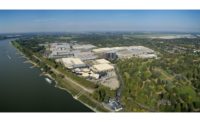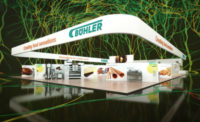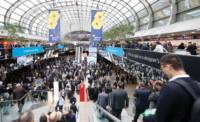Interpack 2017 to offer the total package
Exhibitors from 60 countries will offer a complete overview of the market.
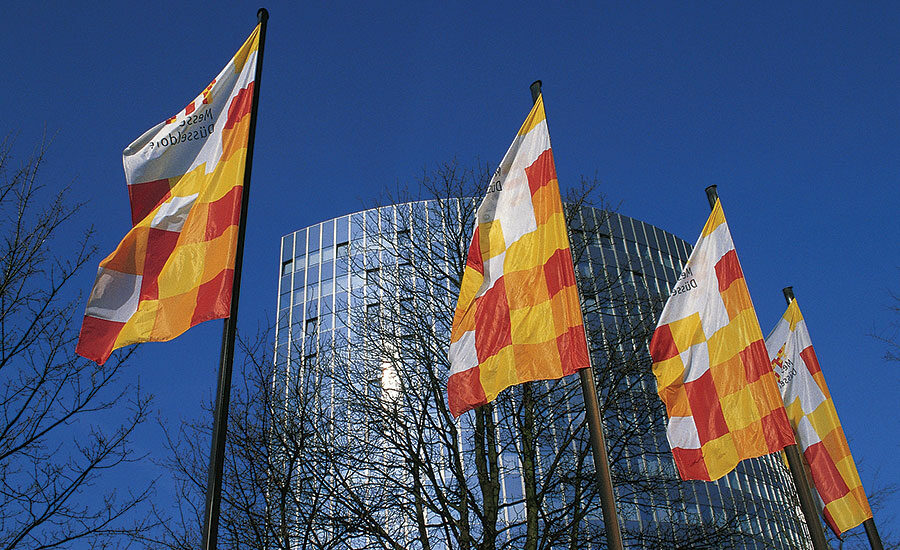
Nearly 1,000 of the 2,700 exhibitors attending the show have expressly focused on the confectionery industry as a target group.

Nearly 1,000 of the 2,700 exhibitors attending the show have expressly focused on the confectionery industry as a target group.
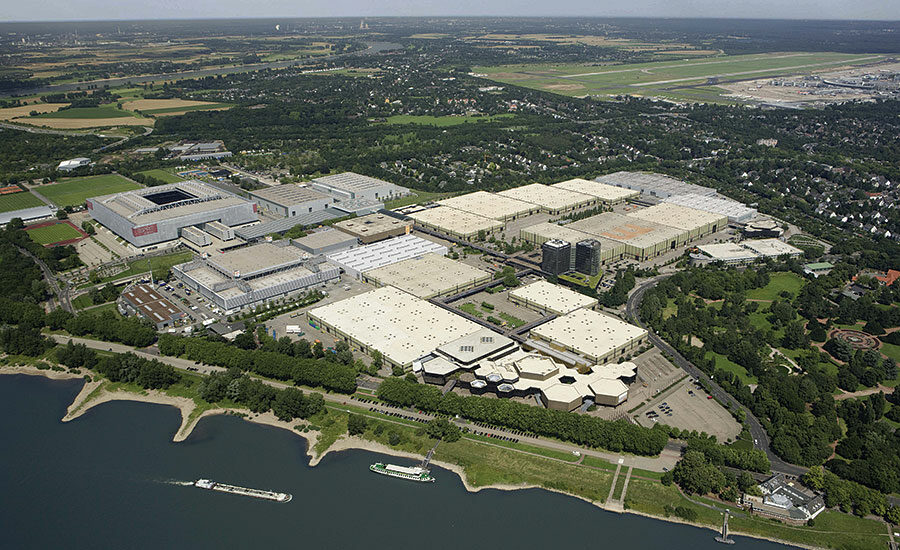
A bird’s eye view of the fairgrounds for interpack along with an accompanying schematic showing hall location.
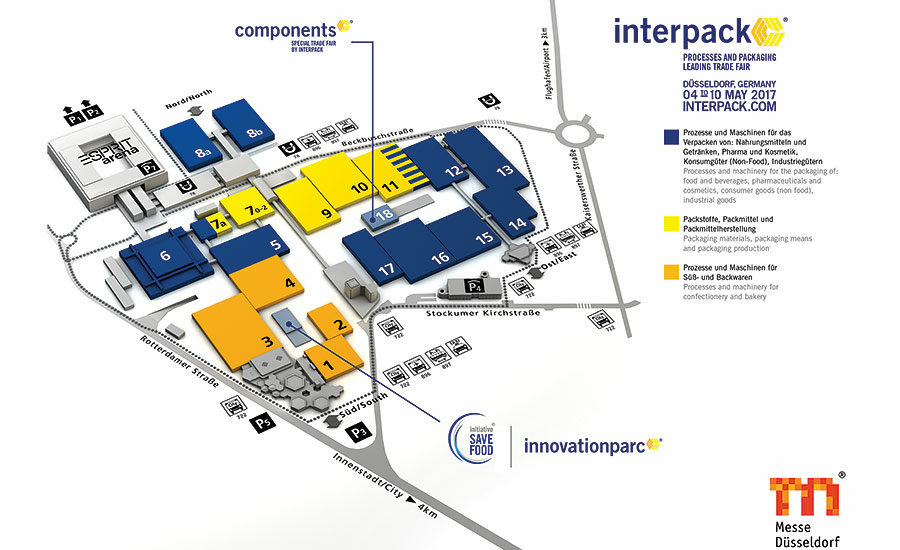
A bird’s eye view of the fairgrounds for interpack along with an accompanying schematic showing hall location.

Nearly 170,000 visitors are expected to attend this year’s interpack.





interpack 2017, the world’s leading international trade fair for the packaging sector as well as the confectionery and snack processing industries, will take place from May 4-10, 2017 in Düsseldorf, Germany. Some 2,700 exhibitors from nearly 60 countries will offer a complete overview of the market — with machinery, products and solutions from the sectors of packaging technology, related processes and packaging materials — to 170,000 visitors from around the globe.
By the registration deadline, interpack 2017 recorded the highest exhibitor demand in its 55-year history, with exhibitors booking about 20 percent more space than is available at the exhibition center with its 2.8 million sq. ft. in 19 halls. Held concurrently will be the special components trade fair, featuring products from the supplier industries of the packaging sector. This event is also fully booked, occupying more than twice as much space as at its premiere staging in 2014.
At interpack many more packaging innovations for confectionery and bakery products will also be shown. Some 2,700 exhibitors are expected, and about 1,000 of these have named the confectionery industry as a target group for their products and services, and what they will be exhibiting will be suitably wide-ranging.
Machine manufacturers will also be present in Düsseldorf with numerous innovations.
“Manufacturers of food-processing and packaging machines accord high priority to handling natural resources responsibly and managing their processes with minimal environmental impact. They know how important sustainable production processes are for customers,” says Vera Fritsche, expert at the association for food processing machines and packaging machines within VDMA (Mechanical Engineering Industry Association).
In confectionery production, Fritsche continues, there is still plenty of room for optimization. Intelligent control and automation technologies and energy-efficient drives, compressors, fans and pumps are some of the classical solutions for saving electricity and other resources and boosting energy-efficiency. Efficient motors perfectly adapted to machine movements and acceleration processes reduce power consumption.
In addition, says Fritsche, innovative and optimized processes cut the consumption of energy and water, while innovative machine designs extend service and maintenance intervals and service life and thus save energy.
Swiss plant manufacturer Bühler, one of the prime movers in efficient processing solutions, has set itself the goal of reducing energy consumption in all of its core processes by at least a further 20 percent by 2020.
“This way we can both raise the energy-efficiency of our products and also do our bit for environmental protection at the same time,” says Ian Roberts, the Group’s Chief Technology Officer. He sees a central aspect here in productivity — shortening cycle times, for example.
Additionally, Bühler is redoubling its efforts to improve the energy efficiency of existing customer installations. Because of the numerous steps involved in making chocolate, such as cleaning, roasting, debacterizing, crushing and grinding the cocoa beans, processing cocoa beans into chocolate is highly complex and costly.
Bühler pledges to slash energy costs in cocoa processing by 65 percent if customers make use of the company’s free energy audit and also adopt its shell burning technology. The audit is used for tracking down energy leaks in the production process. As an alternative to the direct disposal of the shells, the new combustion system exploits the energy obtained from the shells for roasting so no heating energy has to be brought in.
Theegarten-Pactec is also pushing vigorously ahead with machine solutions that help customers cut their costs. The company is focusing among other things on “Industry 4.0,” i.e. the digitalization of production and streamlined human-machine and machine-machine communication with the aid of the latest software.
“Making production processes transparent, keeping key data retrievable at all times, analyzing them correctly and ultimately deciding on the appropriate course of action holds great potential for boosting efficiency,” says Markus Rustler, Theegarten’s managing partner.
For this purpose, the company started back in 2011 to overhaul its user interface and the associated data processing for the machine operator and management.
“We have thus created a platform that makes the performance of our systems more transparent,” says Rustler. “For example, it is possible to establish correlations between efficiency losses and time, ambient temperature or other parameters. And this helps operators to track down errors and to find their own solutions.”
Furthermore, the intuitive support of maintenance and cleaning processes has been optimized, he explains. The advantage of automation and digitalization is that the machinery linked into complex communication systems can be operated by fewer operators, in some cases even only one. And by integrating the user interface into mobile consumer devices, the data from the machinery can be accessed and even edited from anywhere in the world.
The Swiss company Knobel Maschinenbau, a specialist in machines for chocolate manufacture, helps producers to cut costs in other ways. It sells its equipment — moulding lines, stand-alone depositors and other devices — on the modular principle so that customers can extend their production step by step and, if required, re-equip their production locally segment-wise. This offers them high flexibility and thus permits rapid and efficient changeover to new products. Swift re-equipping has also been made possible by simply integrating new machines in the system on the plug-and-play principle, Knobel explains.
With numerous efficiency-boosting innovations, machine manufacturers have attuned themselves to the requirements of manufacturers of confectionery and bakery products. This gives the latter plenty of scope not only in their choice of packaging materials, but also in the modernization of their lines. And at interpack, they can find out all about these innovations.
Looking for a reprint of this article?
From high-res PDFs to custom plaques, order your copy today!



